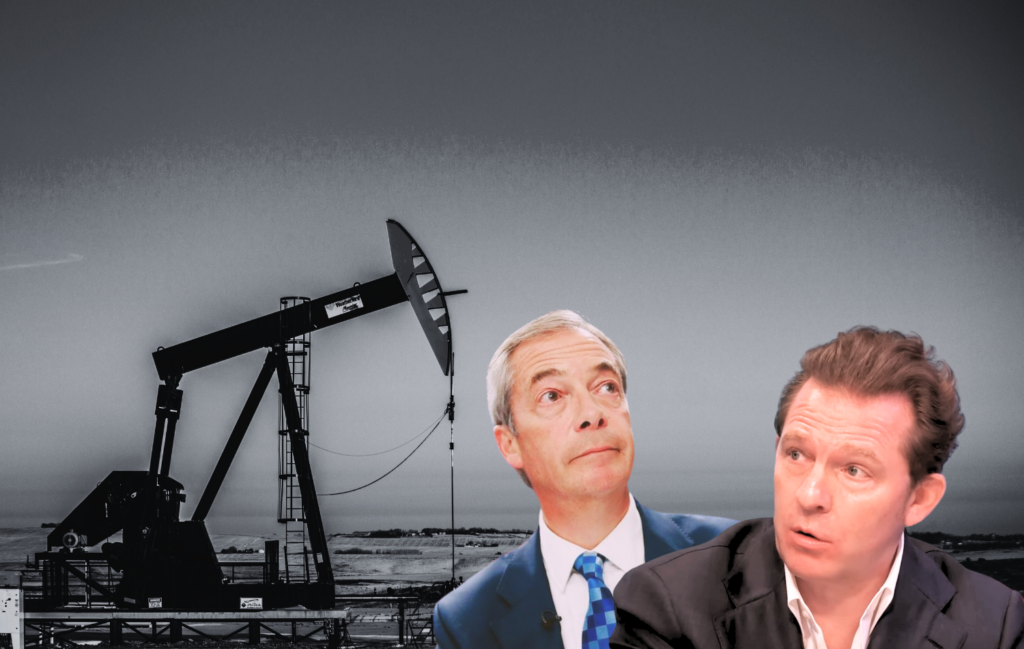Lord Lawson asserts that his attack on climate change policy is motivated by deep concerns for the working classes – fears environmental measures will cost jobs and undermine prosperity.
Environmentalists claim that Lawson is acting in the interests of the oil industry even if he is not directly funded by any oil companies.
A secret government document published today after 34 years hidden in the archives provides new evidence that Lawson when a cabinet minister acted in the interests of the oil companies – but not their workers.
Lawson proposed his top secret LEADBURN plan to the Cabinet on 10 November 1981 which suggested declaring a national state of emergency within a week and confirmed 12,500 British troops had been placed on notice to move in order to keep fuel supplied and break a national strike.
The document – released for the first time by DeSmog UK – is marked “confidential” and is headlined, Cabinet, Oil Tanker Drivers: Contingency Measures, Memorandum of the Secretary of State for Energy.
Fuel Shortages
The Transport and General Workers Union (TGWU) had called for an “all-out strike” demanding an 11 percent pay rise for its members working for BP, Shell, Esso and Texaco.
A meeting of the Civil Contingencies Unit (CCU) was called on 4 November with ministers agreeing “preliminary steps to bring forward plans to protect essential services from fuel shortages.
“If an all-out strike occurred, it would cut off two-thirds of normal supplies of oil products… and would bring almost all road deliveries to a halt…
“Shortages of this scale would have early and serious consequences the community and the economy.”
Lawson, who had been in the job about six weeks, warned industry would be “immobilised” preventing “movement of raw materials and products”; reserve stocks would be exhausted, and “there would be increasing difficulties in getting people to work as motorists run dry.”
The government was not about to let this happen. So 160 service instructors were placed on notice the following day to move to undisclosed training locations around the country. Then on 10 November “the main body of 12,500 men were placed on six days’ notice to move.”
State of Emergency
The CCU planned to meet the following Friday to decide whether to “confirm the implementation of LEADBURN on 16 November and seek a Privy Council to secure the Proclamation of a State of Emergency on that day (if the situation has sharply deteriorated).”
They would also be asked to agree “to place the main body of servicemen on 24 hours’ standby from Sunday 15 November (if an all-out strike on 16 November looks uncertain).
“In this case it may be convenient to authorise the Home Secretary, in consultation with the Prime Minister and other Ministers immediately involved, to take any appropriate decision that may be needed over the weekend or in the early part of next week.”
The TGWU was at the time of the strike the biggest general union in Britain with more than 900,000 members. It has since merged to form part of Unite the Union.
The publication of these documents for the first time shows the significant power transport workers had in Britain during that time, and the lengths the government had to go to meet their demands.
The documents also suggest that people working for energy companies might take it with a pinch of salt when Lord Lawson claims to have their interests at heart when attacking the science of climate change.
The sense of panic and urgency conveyed in Lawson’s emergency plan is brilliantly echoed in the satire of his tendency to fear the worst in Spitting Image broadcast by the BBC (pictured above – video below).
Subscribe to our newsletter
Stay up to date with DeSmog news and alerts







